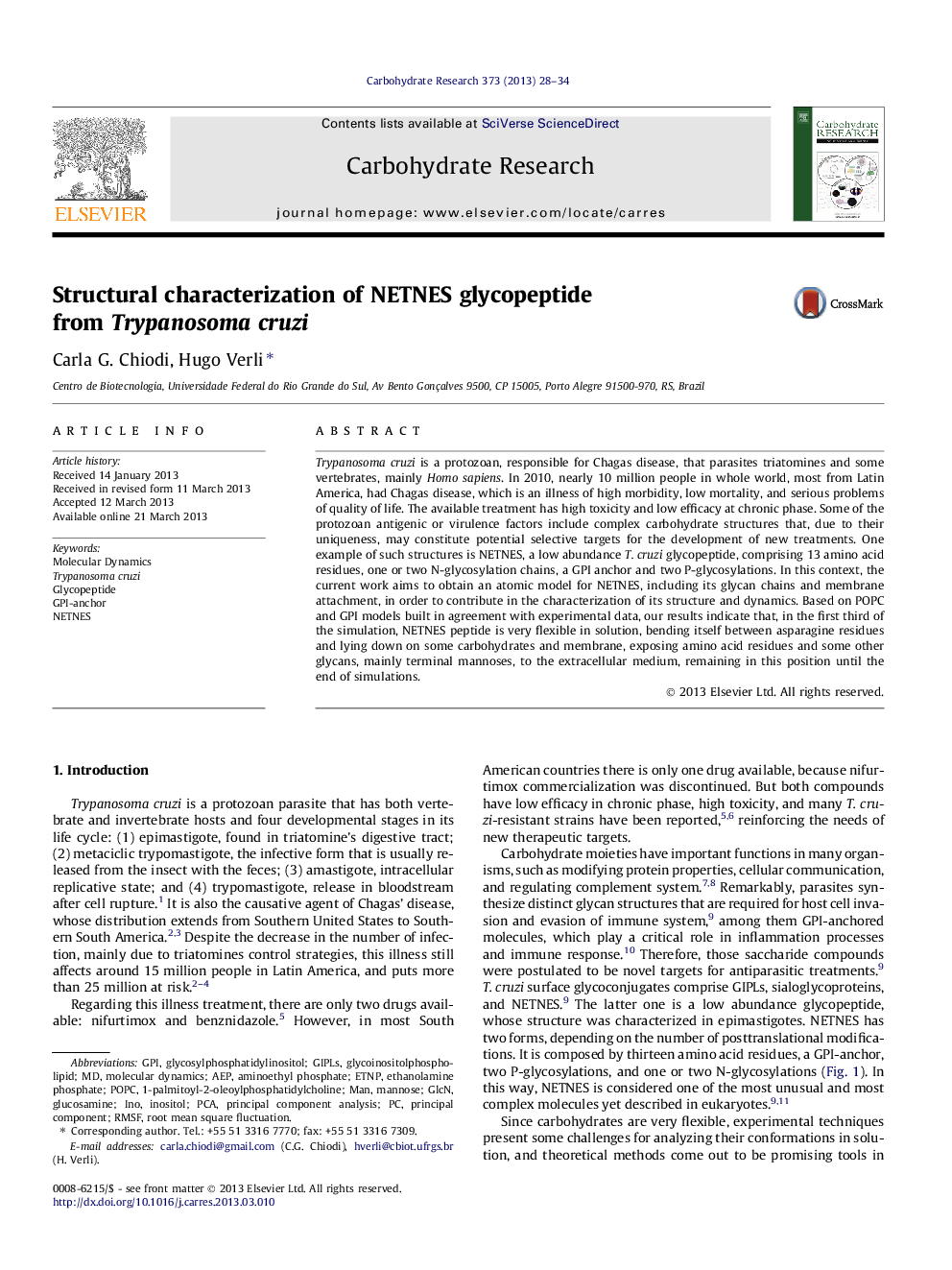| کد مقاله | کد نشریه | سال انتشار | مقاله انگلیسی | نسخه تمام متن |
|---|---|---|---|---|
| 1390314 | 1500878 | 2013 | 7 صفحه PDF | دانلود رایگان |

• NETNES is one of the most complex molecules yet characterized in eukaryotes.
• First work performing molecular dynamics simulations of a GPI-anchor with GROMOS96.
• GPI structure is in good agreement with Nuclear Overhauser Effect experimental data.
• Protein portion does not have any secondary structure, just bends and turns.
• NETNES lies on membrane surface, exposing itself to the extracelullar medium.
Trypanosoma cruzi is a protozoan, responsible for Chagas disease, that parasites triatomines and some vertebrates, mainly Homo sapiens. In 2010, nearly 10 million people in whole world, most from Latin America, had Chagas disease, which is an illness of high morbidity, low mortality, and serious problems of quality of life. The available treatment has high toxicity and low efficacy at chronic phase. Some of the protozoan antigenic or virulence factors include complex carbohydrate structures that, due to their uniqueness, may constitute potential selective targets for the development of new treatments. One example of such structures is NETNES, a low abundance T. cruzi glycopeptide, comprising 13 amino acid residues, one or two N-glycosylation chains, a GPI anchor and two P-glycosylations. In this context, the current work aims to obtain an atomic model for NETNES, including its glycan chains and membrane attachment, in order to contribute in the characterization of its structure and dynamics. Based on POPC and GPI models built in agreement with experimental data, our results indicate that, in the first third of the simulation, NETNES peptide is very flexible in solution, bending itself between asparagine residues and lying down on some carbohydrates and membrane, exposing amino acid residues and some other glycans, mainly terminal mannoses, to the extracellular medium, remaining in this position until the end of simulations.
Figure optionsDownload as PowerPoint slide
Journal: Carbohydrate Research - Volume 373, 24 May 2013, Pages 28–34